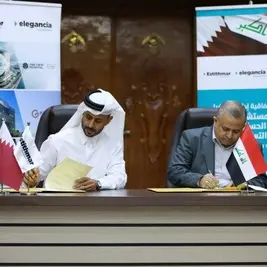MARC has affirmed CIMB Islamic Bank Berhad’s (CIMB Islamic) financial institution (FI) ratings of AAA/MARC-1 with a stable outlook. CIMB Islamic’s FI rating is equalised to parent CIMB Bank Berhad (AAA/Stable) based on its strategic importance in Islamic banking, its shared branding and close operational integration within the group.
The rating agency has concurrently affirmed the ratings on CIMB Islamic’s sukuk issuances with a stable outlook as follows:
- RM10.0 billion Senior Sukuk Wakalah Programme (Sukuk Wakalah) at AAAIS; and
- RM5.0 billion Tier 2 Junior Sukuk Programme at AA+IS.
At end-1H2019, CIMB Islamic’s total assets stood at RM104.4 billion, accounting for 13.0% of Malaysia’s Islamic banking system assets. The bank remains the second-largest Islamic bank domestically. Financing growth continued to be strong, growing 14.2% y-o-y in 1H2019 compared to the Islamic banking industry growth of 8.2% in the same period. The bank’s financing growth policy benefits from its parent’s “Islamic First” strategy under which Islamic financing services are prioritised.
As a result of the strong financing growth during 1H2019, pre-tax profit was higher at RM557.1 million (1H2018: RM496.5 million). On annualising the net financing margin for 2019, it would be marginally lower at 1.69% (2018: 1.72%). MARC views margin pressure to continue due to intense competition among domestic Islamic banks. The bank’s liquidity and funding profiles remain sound, with a financing-to-funds ratio of 81.4% as at end-1H2019 (2018: 81.1%); liquidity coverage ratio is above the minimum 100% requirement.
CIMB Islamic’s gross impaired financing (GIF) ratio rose sharply to 1.76% (2018: 0.62%) largely due to an impairment in the working capital segment related to financing in real estate and manufacturing. The rating agency understands that this impairment is expected to be reversed in the near term. Asset quality could be affected due to the seasoning effect following strong financing growth in recent years.
CIMB Islamic’s healthy capitalisation ratios will continue to mitigate asset quality concerns. Common Equity Tier 1 (CET1) and total capital ratios stood at 13.2% and 15.5% as at end-1H2019 (2018: 13.5%; 16.2%). The bank’s capital position is supported by internal capital generation and by its parent CIMB Bank through the restricted profit-sharing investment account which absorbs credit risk. As at end-June 2019, the total risk-weighted assets for credit risk absorbed by the parent stood at RM6.7 billion (2018: RM6.9 billion).
Contacts: Raj Shankar, +603-2717 2956/ rajshankar@marc.com.my ; Mohd Izazee Ismail, +603-2717 2947/ izazee@marc.com.my
© Press Release 2019Disclaimer: The contents of this press release was provided from an external third party provider. This website is not responsible for, and does not control, such external content. This content is provided on an “as is” and “as available” basis and has not been edited in any way. Neither this website nor our affiliates guarantee the accuracy of or endorse the views or opinions expressed in this press release.
The press release is provided for informational purposes only. The content does not provide tax, legal or investment advice or opinion regarding the suitability, value or profitability of any particular security, portfolio or investment strategy. Neither this website nor our affiliates shall be liable for any errors or inaccuracies in the content, or for any actions taken by you in reliance thereon. You expressly agree that your use of the information within this article is at your sole risk.
To the fullest extent permitted by applicable law, this website, its parent company, its subsidiaries, its affiliates and the respective shareholders, directors, officers, employees, agents, advertisers, content providers and licensors will not be liable (jointly or severally) to you for any direct, indirect, consequential, special, incidental, punitive or exemplary damages, including without limitation, lost profits, lost savings and lost revenues, whether in negligence, tort, contract or any other theory of liability, even if the parties have been advised of the possibility or could have foreseen any such damages.










